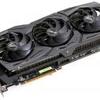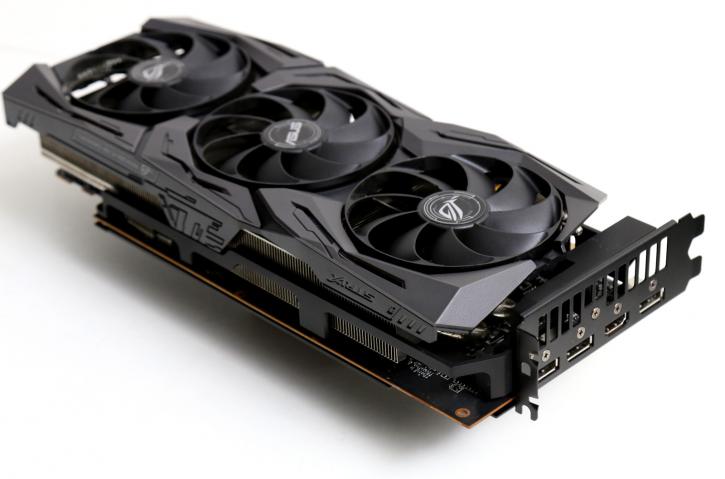Final words and conclusion
.final words
The ASUS ROG Radeon RX 5700 XT STRIX is an impressive graphics card, however, when I just looked up the prices I got a bit scared. The series should sit in the 399 USD/EUR range and the cheapest you'll find this STRIX edition for is (we expect) € 449,- As stated in the reference reviews already, NAVI sits at the Vega performance level. So the improved architecture is sound, and works. Compared to reference, depending on how and where you measure you gain an extra 2 up-to maybe of you're lucky 4% in performance. The realm AMD is sitting in performance-wise with the RX 5700 series is the non-Super models 2060 and 2070 with exceptions here and there. Then there is, of course, the discussion on how relevant you find hardware-accelerated Raytracing and Tensor support. Most of you don't care at this time, but much like anything in the tech industry, everything will evolve, and AMD positioned itself to be smacked down in the middle of that next step in the gaming evolution. By not offering at least RT support, their trump card really needs to be pricing and proper shader-based gaming performance. ASUS is doing it right though with that proper and silent cooler and a bit of a tweak. That tweak, however, offers 2~4% more performance depending on the game title at best.
.performance
Both Radeon RX 5700 cards show good, in fact, super strength at Quad HD resolutions in that 2560x1440 realm of resolutions. Games like Battlefield V will make you aim, shoot and smile. As always comparing apples and oranges, the performance results vary here and there as each architecture offers advantages and disadvantaged in certain game render workloads. Battlefield V and Metro: Exodus skyrockets for NAVI. So you'll be seeing wins and losses in perf compared to team green. AMD has got the right amount of graphics memory applied, the right type this time as well as 8GB GDDR6 graphics memory running over that 256-bit bus at 14 Gbps, is done right. The new architecture does show strength and IPC increase, especially seen from Polaris the results are pretty amazing. However, that statement has no merit, as they are not priced in the same region. Realistically the XT card makes good sense in the Wide Quad HD space (monitor resolution of 2560x1440) and can even properly handle games at 3840x2160 (Ultra HD). Result vary per game title though.
.pricing
The XT remains steeply-priced at 399 USD for the reference model. We expect the AIB custom premium boards to be roughly 25 bucks more expensive, but we need to wait and see how thing pan out with availability, as that has an extensive effect on street prices. Even today we're not even sure if there will be heaps of volume for these cards available.
.cooling & noise levels
Cooling is a choice with the STRIX, silent mode sits at roughly 67 to 70 Degrees C while gaming, and that is fine. You can shave off maybe another 5% in performance mode, at the cost of increased fan RPM and an increased noise level. Honestly, we advise the silent mode and let things be as they are. We've have heard noticeable coil whine, please be aware of that. But I do want to note that any graphics card at a high-enough FPS will make some coil-whine.
.energy
The TDP for this XT we measure to be roughly 235 Watts. That number varies a bit per game title, workload, resolution and even refresh rate of course. It's a substantial wattage, especially compared to the competition's products in the same performance bracket.
.conclusion
ASUS once again offers a terrific product here with that reputable cooler and dark style as well. It's really silent in silent BIOS mode, cools great and offers performance and tweaking levels on the GPU that are really good. These cards behave extremely well in the normalized 2560x1440 range of resolutions, but with some titles, perf can cave in where at others it takes a lead. Whether or not this performance is justified at the recommended retail prices, I don't know and we'll have to wait and see how that pans out. GDDR6 then, the card comes with a proper 8GB of GDDR6 memory. Really, that exactly right and what these products it needs. With 8GB a lack of graphics memory, however, is not something you'll easily run into for the coming years. A game like Battlefield V manages to pull roughly 110+ FPS on average in WQHD for the XT. That's 80 FPS for Shadow of the Tomb Raider and 100+ FPS in Far Cry: New Dawn. These are good values at such monitor resolutions and remember we always apply the better if not best, relevant image quality settings. The non-XT model overall is 10% slower. With cooling, noise levels and looks addressed the rest all boils down to performance and sheer pricing. The XT does perform well in many games, and a bit less in others. As such pricing will be so important as NVIDIA has some very competitive Super cards available as well. And whether you like or disklike RT and DLSS, it does offer it as extra. Pricing, however, is everything, and we think that you might be looking at a 449 EUR / 439 USD range, obviously, that might be a notch too much - however ASUS has yet to confirm final pricing. From a hardware point of view though, the card ticks most if not all of the right boxes. It is a lovely product and could have been a top pick even, however, the 5700 XT is a high-end card, not enthusiast class. The card overall will easily deserve our recommended award, but with the right price, it could have been a top pick.
Update August 15th, ASUS came back with a price of 535 EUR, which obviously is too much for what it should be.
- Unigine Heaven Stress test
- MSI AfterBurner
- 3DMark FireStrike + Time Spy + Port Royale)
- Download AMD Radeon drivers
- Download NVIDIA GeForce drivers
Sign up to receive a notification when we publish a new article.
Or go back to Guru3D's front page



